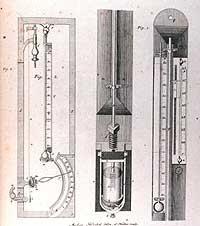Since ancient times, human minds have tried to comprehend the essence of the world, the laws of nature, the history of their own origin and destiny in this Universe. This desire generated completely diverse pictures of the world in different eras and in different corners of the planet: the personification of natural elements with a divine beginning, the idea of the struggle of darkness and light in Persian Zoroastrianism, the creation of the world and the apocalypse in Judaism, and much more.
However, the true germ of rational scientific knowledge of the world is considered a breakthrough made by thinkers of ancient Greece. So, one of the most important concepts of Aristotle was the introduction of the concept of "emptiness", complete emptiness - a space where nothing exists. The idea of emptiness was a frightening phenomenon for the philosopher, but, in his opinion, impossible in nature. After all, the empirical data available then to man could not in any way reveal the concept of absolute vacuum, and all ordinary space is filled with air. For example, if you try to blow air from a hollow tube, its walls will shrink. That is, not only emptiness, but also space itself will not remain inside. And the water in the pipes always rose behind the piston, preventing the formation of emptiness.
Torricelli Experience: Description
The idea that there can be no space in the world not filled with liquid, solid or gaseous matter has successfully lived until the New Age - the era of human thought and scientific achievements. It was then that people again regained their faith in the possibility of a practical and rational knowledge of the world. The experience of Torricelli, however, was not only the result of scientific research, but also an accident. During the construction of fountains at the palace of one of the dukes of the famous Medici dynasty, it was noticed that the water actually rises through the pipes, filling the resulting void, but only to a certain height, after which it stops moving. This fact could not but arouse interest in the homeland of the Renaissance.

For explanations, they turned to the physicist and mathematician Galileo Galilei, widely known at that time (and even more famous today). However, he, not finding an acceptable answer in logic, decided to resort to an experimental path. The experiments were commissioned to put to two of his students - Viviani and Torricelli. Interesting results were achieved by the second. The experience of Torricelli suggested placing a certain volume of mercury in a glass tube (it is heavier than water, therefore it shows more visual results with small volumes of the container) so that air does not get there. In this case, the upper end was sealed, and the open lower was placed in a cup with mercury. It turned out that mercury also did not fill the entire space of the tube, leaving a certain amount of void on top. However, this empirical knowledge did not immediately receive its theoretical justification.
Explanation of experience
The experience of Torricelli soon became known to all enlightened Europe, whose scientists argued about the nature of this phenomenon. The explanation was given by Evangelista Torricelli himself. Since there was no air above the mercury in the glass tube closed above, he explained that the height of the mercury column was literally determined by the air pressure on the mercury in the cup, causing it to go more and more into the glass tube. For the first time, atmospheric pressure was discovered experimentally. Torricelli's formula said that this pressure corresponds to the height of the mercury column: P atm = P mercury. Further research was picked up by the Frenchman Blaise Pascal, who expressed in numbers the dependence of the height of the column on the gravity of the air at a particular moment, thus giving humanity the ability to determine the atm. pressure.